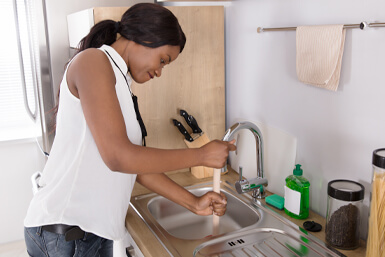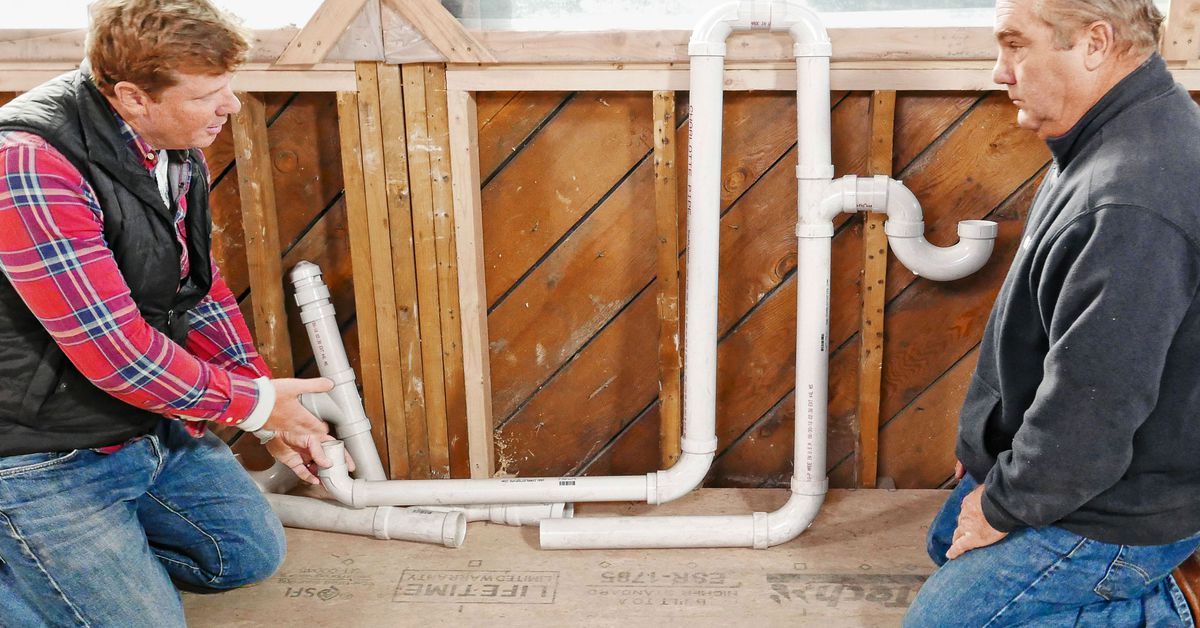This article following next about How To Fix Noisy Pipes is truly interesting. Give it a try and draw your own findings.

To diagnose loud plumbing, it is necessary to identify initial whether the undesirable noises happen on the system's inlet side-in other words, when water is turned on-or on the drainpipe side. Sounds on the inlet side have varied reasons: extreme water pressure, used shutoff as well as faucet components, incorrectly connected pumps or various other devices, incorrectly positioned pipeline fasteners, and plumbing runs having a lot of tight bends or various other constraints. Noises on the drain side normally stem from inadequate place or, as with some inlet side sound, a design containing limited bends.
Hissing
Hissing noise that occurs when a tap is opened somewhat normally signals excessive water stress. Consult your regional water company if you think this problem; it will certainly have the ability to tell you the water pressure in your location as well as can install a pressurereducing shutoff on the incoming water pipe if necessary.
Thudding
Thudding sound, frequently accompanied by trembling pipes, when a tap or appliance shutoff is turned off is a problem called water hammer. The noise as well as vibration are triggered by the reverberating wave of stress in the water, which instantly has no place to go. Occasionally opening a shutoff that discharges water swiftly into an area of piping including a constraint, elbow joint, or tee fitting can generate the exact same problem.
Water hammer can typically be treated by mounting fittings called air chambers or shock absorbers in the plumbing to which the problem shutoffs or faucets are linked. These tools allow the shock wave produced by the halted circulation of water to dissipate in the air they have, which (unlike water) is compressible.
Older plumbing systems might have short upright areas of capped pipe behind wall surfaces on tap runs for the exact same objective; these can eventually full of water, lowering or destroying their efficiency. The remedy is to drain pipes the water supply completely by turning off the primary water system shutoff and opening up all taps. Then open the primary supply shutoff and also close the faucets one by one, beginning with the tap nearest the valve and also finishing with the one farthest away.
Chattering or Shrieking
Intense chattering or shrieking that takes place when a shutoff or tap is activated, which usually vanishes when the fitting is opened totally, signals loosened or defective internal parts. The option is to change the shutoff or tap with a new one.
Pumps as well as home appliances such as cleaning equipments and also dishwashers can transfer motor noise to pipes if they are incorrectly attached. Connect such things to plumbing with plastic or rubber hoses-never inflexible pipe-to isolate them.
Various Other Inlet Side Noises
Creaking, squeaking, scratching, snapping, as well as tapping typically are triggered by the growth or tightening of pipelines, normally copper ones providing warm water. The audios happen as the pipelines slide versus loosened bolts or strike close-by home framing. You can typically pinpoint the area of the trouble if the pipelines are subjected; simply comply with the noise when the pipes are making noise. Probably you will discover a loose pipe hanger or a location where pipelines lie so near to floor joists or other framing items that they clatter versus them. Affixing foam pipeline insulation around the pipes at the point of get in touch with ought to fix the problem. Make certain bands as well as hangers are protected and provide adequate assistance. Where feasible, pipe fasteners should be affixed to substantial architectural aspects such as foundation walls as opposed to to mounting; doing so minimizes the transmission of vibrations from plumbing to surfaces that can intensify and also transfer them. If attaching bolts to framework is inevitable, cover pipelines with insulation or other resilient product where they call fasteners, and also sandwich completions of new fasteners between rubber washing machines when installing them.
Correcting plumbing runs that deal with flow-restricting tight or numerous bends is a last resource that ought to be undertaken only after getting in touch with an experienced plumbing service provider. Regrettably, this situation is fairly typical in older houses that might not have actually been constructed with indoor plumbing or that have seen a number of remodels, especially by beginners.
Drainpipe Noise
On the drainpipe side of plumbing, the chief objectives are to get rid of surface areas that can be struck by falling or rushing water as well as to insulate pipelines to contain inescapable sounds.
In brand-new building, bath tubs, shower stalls, bathrooms, and also wallmounted sinks as well as containers ought to be set on or versus durable underlayments to minimize the transmission of sound with them. Water-saving toilets as well as faucets are less loud than traditional designs; install them rather than older kinds even if codes in your area still allow using older components.
Drains that do not run vertically to the cellar or that branch into horizontal pipeline runs supported at floor joists or various other framing existing specifically problematic sound troubles. Such pipes are big sufficient to radiate significant resonance; they likewise lug significant amounts of water, that makes the situation worse. In brand-new building and construction, specify cast-iron soil pipelines (the huge pipes that drain pipes commodes) if you can afford them. Their massiveness consists of a lot of the noise made by water going through them. Additionally, stay clear of routing drainpipes in wall surfaces shown to bedrooms and spaces where individuals collect. Walls containing drainpipes must be soundproofed as was defined earlier, utilizing dual panels of sound-insulating fiber board and also wallboard. Pipes themselves can be wrapped with special fiberglass insulation produced the purpose; such pipes have an invulnerable vinyl skin (often having lead). Outcomes are not always satisfying.
WHY IS MY PLUMBING MAKING SO MUCH NOISE?
This noise indeed sounds like someone is banging a hammer against your pipes! It happens when a faucet is opened, allowed to run for a bit, then quickly shut — causing the rushing water to slam against the shut-off valve.
To remedy this, you’ll need to check and refill your air chamber. Air chambers are filled with — you guessed it — air and help absorb the shock of moving water (that comes to a sudden stop). Over time, these chambers can fill with water, making them less effective.
You’ll want to turn off your home’s water supply, then open ALL faucets (from the bathroom sink to outdoor hose bib) to drain your pipes. Then, turn the water back on and hopefully the noise stops! If you’re still hearing the sound, give us a call to examine further.
Whistles
Whistling sounds can be frustrating, as sometimes the source isn’t easily identified. However, if you can pinpoint which faucet or valve that may be the cause, you’ll likely encounter a worn gasket or washer — an easy fix if you replace the worn parts!Whistling sounds from elsewhere can mean a number of things — from high water pressure to mineral deposits. Your best plan of attack here is to give our plumbing experts a call. We’ll be able to determine where the noise is coming from and what the cause may be, then recommend an effective fix!
Cracks or Ticks
Cracking or ticking typically comes from hot water going through cold, copper pipes. This causes the copper to expand resulting in a cracking or ticking sound. Once the pipes stop expanding, the noise should stop as well.
Pro tip: you may want to lower the temperature of your water heater to see if that helps lessen the sound, or wrapping the pipe in insulation can also help muffle the noise.
Bangs
Bangs typically come from water pressure that’s too high. To test for high water pressure, get a pressure gauge and attach it to your faucet. Water pressure should be no higher than 80 psi (pounds per square inch) and also no lower than 40 psi. If you find a number greater than 80 psi, then you’ve found your problem!
Next step is to give us a call in order to install a pressure regulator. Trust us, you don’t want to wait to resolve this issue. Not only is the sound annoying, but high water pressure can be destructive to your home — including damaging certain appliances, like your washer and dishwasher.
Dripping
You might be accustom to the slow quiet drip your kitchen faucet makes. You might have even tuned out your bathroom sink dripping and drabbing all day long — but it’s time to find its cause.
A slow drip could signify a variety of easy to fix issues, such as a worn out O ring, or loose part. And by ignoring the drip, you could be wasting up to 2,000 gallons of water a year! So start conserving water — get it looked at ASAP.
https://www.pwessig.com/blog/2018/december/why-is-my-plumbing-making-so-much-noise-/

Hopefully you enjoyed reading our article about Why Do My Pipes Make Noises. Thank you for taking the time to browse our article. Are you aware of someone else who is enthusiastic about How To Fix Noisy Pipes? Do not hesitate to promote it. Thank you so much for your time invested reading it.
View More
Comments on “Calling in the Pros: Common Home Appliance Troubles Best Entrusted To Plumbers”